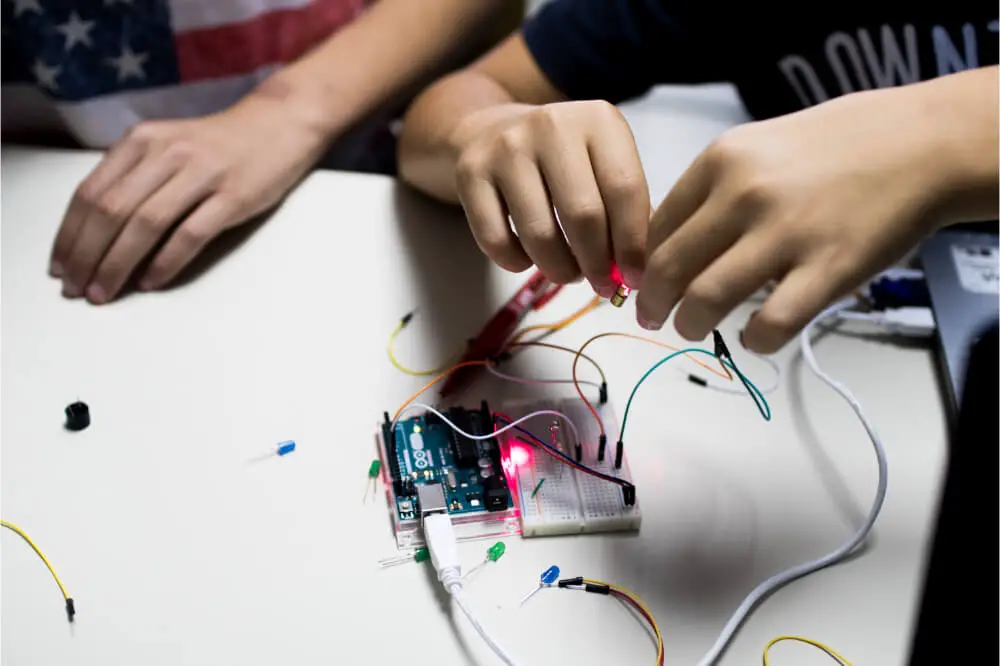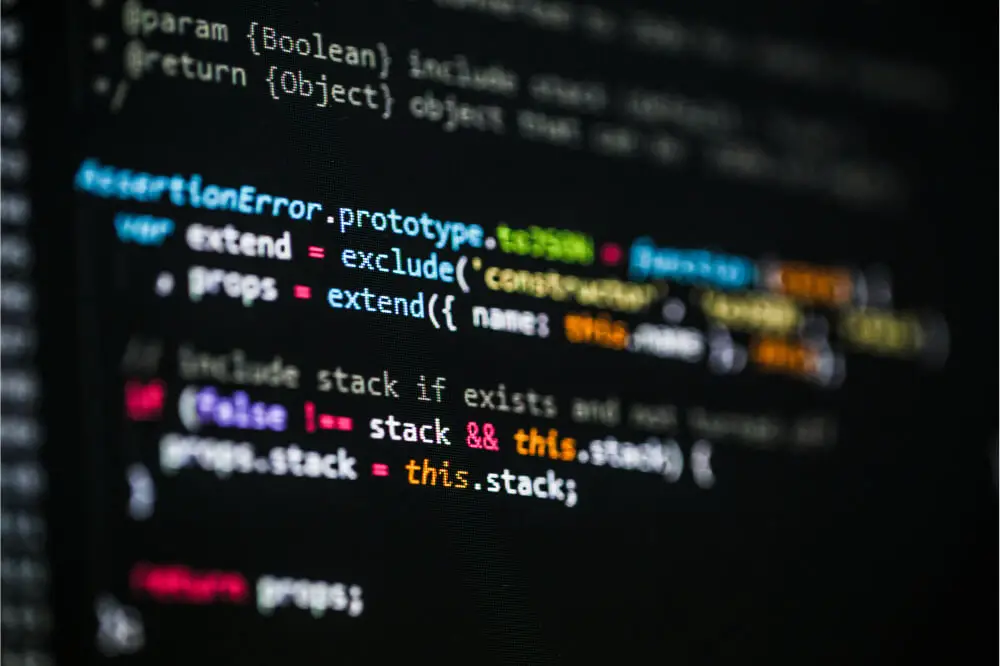Are you hoping to learn where to write the Arduino code? If so, you’ve come to the right place since, in this article, we’ll be diving into detail the steps to follow when writing this code. But before diving further into that, you need first to understand what Arduino boards are.
An Arduino board is a small computer that you can use for making homemade IoT gadgets as well as doing a broad range of electronic projects. This board stands out from the other component-level electronic projects in that you’ll need to program it to accomplish anything you want.
With that said, let’s now proceed to an in-depth guide on where you need to write the Arduino code.
Where Should You Write The Arduino Code?
It’s in the Arduino Integrated Development Environment (IDE) that the Arduino code is written. A special Arduino IDE software enables you to run your system, enabling you to write programs or sketches for various Arduino boards.
The simple hardware programming language where Arduino is based is referred to as processing, and it’s almost identical to the C language. Once you’re through writing the program in the Arduino IDE, the next thing is uploading it onto the Arduino board for implementation.
When sketching an Arduino board, the first thing you need to do is to download the Arduino IDE and then install it. This open-source Arduino IDE operates on Linux, Mac OS as well as Windows. You should head over to the company’s official site to download the Arduino software and follow the installation instructions.

Steps To Writing Arduino Code
Now that you know where the Arduino code needs to be written, you need to know the steps to follow when writing it. In this instance, we’ll be writing an Arduino code to program for a circuit and then write a program for it.
The equipment and parts you need when doing this include:
- An Arduino (Mega, UNO, Nano)
- Breadboard
- LED
- Resistor
- Jumper Wires
- A computer connected to the internet
Step 1: Install The Arduino IDE
Arduino IDE is the open-source software integrated development environment of Arduino. The composition of the IDE usually includes all the needed tools during software development. Before using the Arduino board, you’ll be required to download an Arduino IDE to edit the source code and subsequently upload the code onto your board.
You can get the Arduino IDE in Linux, Mac, and Windows. All you need to do is download and follow the necessary installation steps for your machine.
Step 2: Build A Circuit
The construction of the circuit is relatively straightforward, and you can do so by using a breadboard when making the circuit. You shouldn’t hesitate to create a shield from the protoboard for your Arduino or join together components. Some individuals prefer creating Fritzing schematics on the circuits before making them, which is PCB routing software and open-source schematic capture.
You should follow this up by connecting the resistor and LED in series between the ground pin (Arduino Board Connections) and Digital I/O Pin 3. The resistor restricts the current from reaching the LED and needs to be of the appropriate size to avoid burning the LED.
Step 3: Write The Arduino Program
After the successful installation of the Arduino IDE, the next thing to do is starting to code. The term for the source code files to be used for Arduino is referred to as sketches. There are lots of noticeable similarities between Arduino’s programming language that’s based on C++/C. After opening the Arduino IDE, you’ll see a new blank sketch displayed on your screen.
This sketch is split into two parts, a loop, and a setup. It would be best if you added a header to all your source code. This means giving your code a description, title, version, and date if need be.
You should then follow this up by including all the needed libraries. However, we aren’t using libraries for this particular code, so you can go right ahead and skip this step.
The next thing to do is writing the definition of all global variables, but this isn’t always necessary. Nonetheless, if you’re dealing with complicated code, these definitions will be crucial in not only simplifying the code but also making your easier for you to edit.
While writing the definition of the variable, you’ll be giving the variable a certain value. For this instance, we will define the Digital I/O Pin 3 on the Arduino UNO to be the LED output.
In the setup, this section is where you put in place the needed software and hardware configurations. This code section only runs once, and because the goal is to drive an LED, we’ll configure the digital I/O pin linked to the LED as an output pin.
After doing this, you’re through writing the code’s main body that will be placed under the loop section. This will be done repeatedly until the Arduino is removed from power or otherwise stated.
Flashing the LED on and off after a couple of seconds will require you to write these commands:
- Switch on the LED
- Wait for 500 milliseconds or 1/2 a second
- Switch off the LED
- Give it 1/2 of second
- Repeat this procedure
Arduino will repeat this code repeatedly since it’s written in a loop function.
Step 4: Upload the Arduino Sketch
Connect your Arduino board through a USB to your computer and then follow these steps below:
- Choose a target board that’ll instruct Arduino IDE and the Arduino board that this is being uploaded to.
- Pick a serial port connected to the board.
- Upload the sketch by pressing the “Upload” button.
At this point, your LED will be flashing on and off after each second. This is after installing the Arduino IDE and then using it to write and upload your Arduino program successfully.
Conclusion
If you’ve just started using Arduino boards, knowing where to write the Arduino code can be a real challenge. For this reason, this article sought to do an in-depth, step-by-step guide on how to go about writing the Arduino code and where. After reading this, you’re now more confident about the steps you should follow when using an Arduino board.


